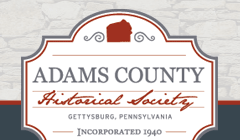Article Title
Document Type
Article
Abstract
On the morning of 1 July 1863, lead elements of Confederate General Robert E. Lee's Army of Northern Virginia advanced on the town of Gettysburg situated in the lush farm lands of south-central Pennsylvania just eight miles east of the South Mountain in Adams county. The Southern reconnaissance in force made early that summer morning was destined not only to change the history of the struggling Confederacy, but also to set the infant United States republic, indeed the world, on courses towards more democratic forms of government.
Although many historians have dwelled on those three fateful days in 1863, few emphasize the role the major roads played in the drama that unfolded at Gettysburg. However, events that transpired over a 116- year period prior to the great battle actually created the highway system that was to draw the opposing forces to town-a hub of ten major roads.
This essay will briefly explore the development of state- and county ordained roads to and through the site of Gettysburg from 1747 until the year of the battle. After a brief history of the colonial development in the greater Adams county area, emphasis will be placed on the evolution of the ten major roads that join at Gettysburg and how the development of the town affected their positioning and that of some ancillary roads within the borough limits. [excerpt]
Recommended Citation
Christ, Elwood W.
(1997)
"Building a Battle Site: Roads to and through Gettysburg,"
Adams County History: Vol. 3, Article 4.
Available at:
https://cupola.gettysburg.edu/ach/vol3/iss1/4
